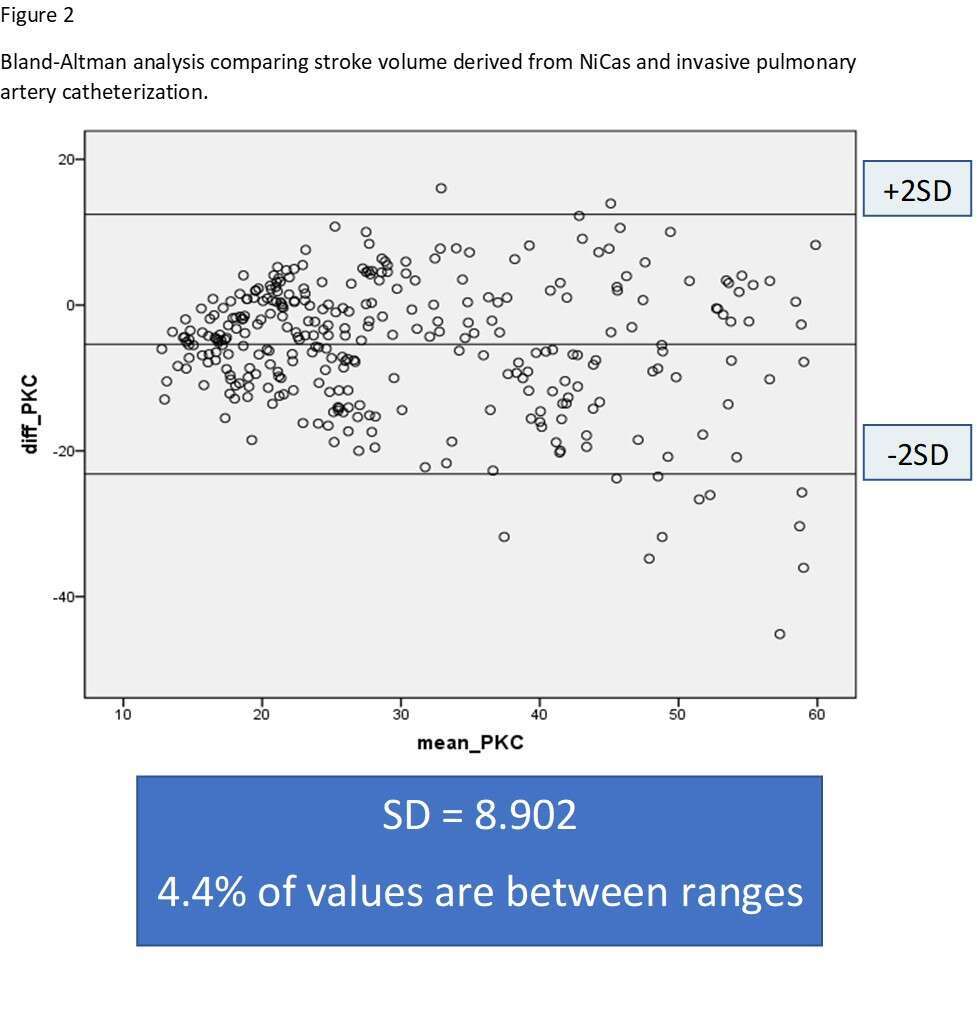
Evaluation of bio-impedance derived stroke volume compared with invasive pulmonary artery catheterization in profound hemorrhagic shock porcine model.
Introduction: It is well established that significant blood loss can occur insidiously before obvious disturbances in blood pressure appear. It is of paramount importance to identify other hemodynamic parameters that will allow for earlier, more precise prediction of deterioration of bleeding to full blown hemorrhagic shock.
Methods: In a controlled massive hemorrhage porcine model, we compared stroke volume (also allowing cardiac output and peripheral resistance calculation) using bio impedance technology (NiCaS, NI Medical, Israel) with invasive pulmonary artery catheterization (PAC) measurements. Stroke volume was compared overall and divided to 3 phases – baseline, acute bleeding, and post bleeding recovery. Linear regression and Bland-Altman analysis were used to estimate the correlation.
Results:  In 12 pigs, 316 measurements were conducted throughout the experiment. The correlation between NiCaS and PAC derived stroke volumes is shown in figure 1. The overall results of the Pearson correlation analysis were as follows: NiCAS stroke volume vs PAC stroke volume: overall - r=0.770, p<0.0001; baseline - r=0.518, p<0.0004; bleeding - r=0.716, p<0.0001; post-bleeding - r=0.685, p
In 12 pigs, 316 measurements were conducted throughout the experiment. The correlation between NiCaS and PAC derived stroke volumes is shown in figure 1. The overall results of the Pearson correlation analysis were as follows: NiCAS stroke volume vs PAC stroke volume: overall - r=0.770, p<0.0001; baseline - r=0.518, p<0.0004; bleeding - r=0.716, p<0.0001; post-bleeding - r=0.685, p
Conclusion:
NiCaS might hold an important role as an adjuvant to routine hemodynamic monitoring for early and precise identification of patients with severe bleeding.
Powered by Eventact EMS